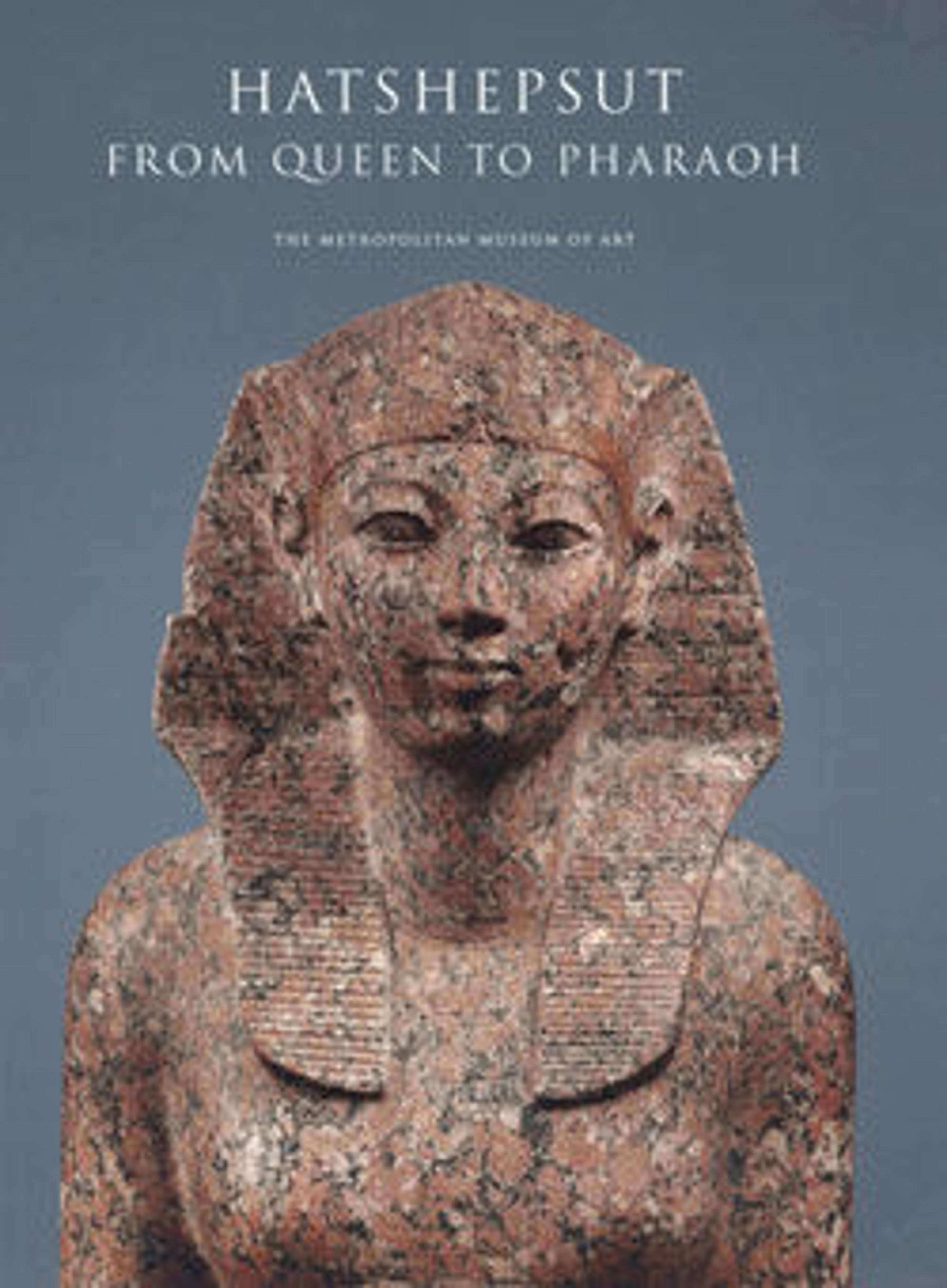Large Seated Statue of Hatshepsut
In this statue, Hatshepsut is portrayed as a male pharaoh dressed in the costume of an Egyptian king, although she does not wear the usual false beard. Like all the statues from Hatshepsut's temple, this one was broken into many pieces by her nephew and co-ruler, Thutmose III. Unlike most of the others, the features of her face have also been systematically destroyed. Certain details of the statue were originally painted, and traces of pigment are still visible on the headdress and broad collar.
Artwork Details
- Title:Large Seated Statue of Hatshepsut
- Period:New Kingdom
- Dynasty:Dynasty 18, early
- Reign:Joint reign of Hatshepsut and Thutmose III
- Date:ca. 1479–1458 B.C.
- Geography:From Egypt, Upper Egypt, Thebes, Deir el-Bahri, Senenmut Quarry, lower court and north of temple, MMA excavations, 1926–27
- Medium:Granite
- Dimensions:H. 229.9 × W. 61 × L. 142.2 cm (90 1/2 × 24 × 56 in.)
- Credit Line:Rogers Fund, 1927
- Object Number:27.3.163
- Curatorial Department: Egyptian Art
More Artwork
Research Resources
The Met provides unparalleled resources for research and welcomes an international community of students and scholars. The Met's Open Access API is where creators and researchers can connect to the The Met collection. Open Access data and public domain images are available for unrestricted commercial and noncommercial use without permission or fee.
To request images under copyright and other restrictions, please use this Image Request form.
Feedback
We continue to research and examine historical and cultural context for objects in The Met collection. If you have comments or questions about this object record, please contact us using the form below. The Museum looks forward to receiving your comments.
